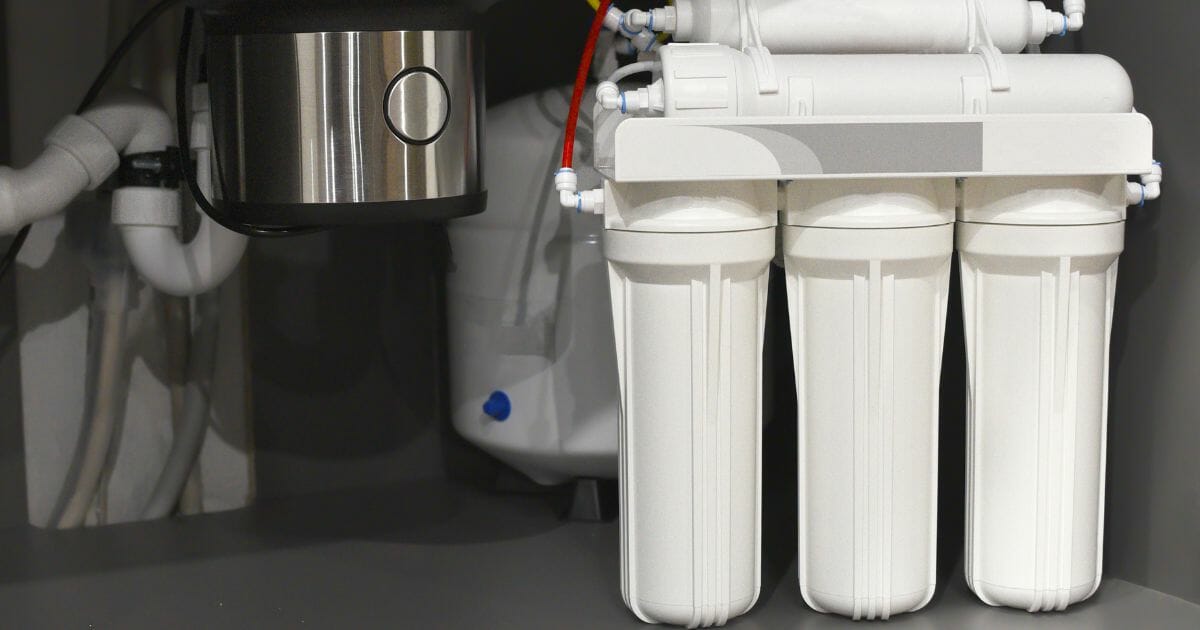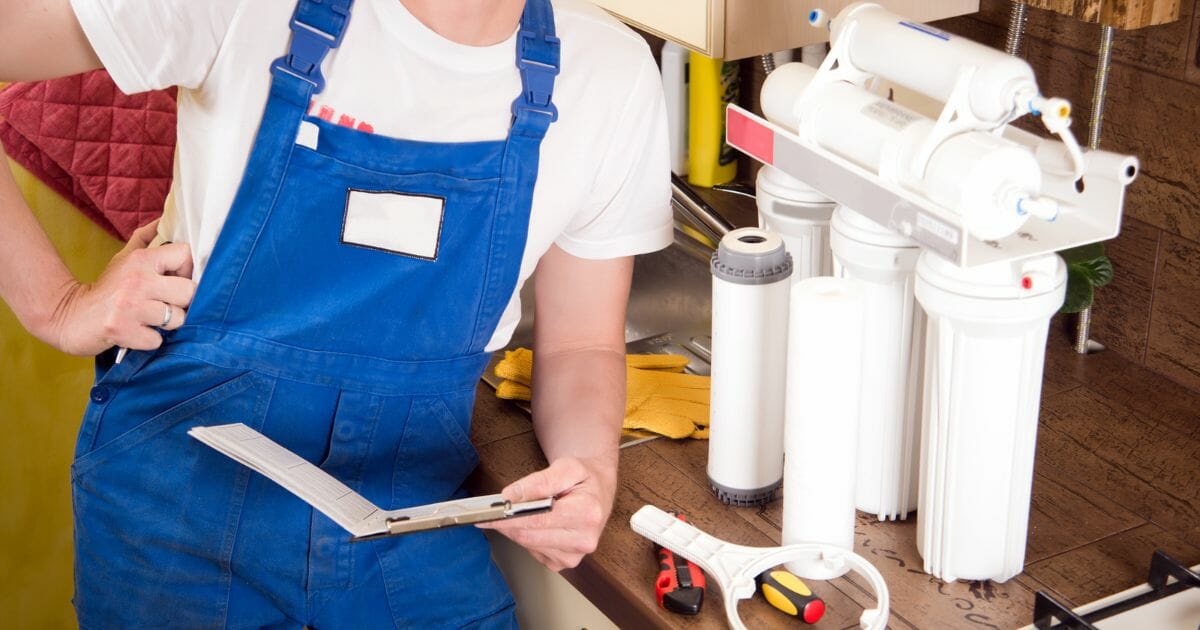We like to share product recommendations with you and hope you like them! Just to make you aware Water Filter Data may collect a small share of sales or other compensation from the links on this page.
A tankless reverse osmosis system uses filters to reduce the amount of chlorine or sediment found in municipal tap water from storage tanks.
The water you drink from the taps in your home may be less safe than you think. You may also be surprised to know that where you live can affect the tap water quality. Installing a tankless reverse osmosis system in your home could ensure that each glass of water you and your family drink is safe and tastes good.
If you’re not familiar with tankless reverse osmosis systems, you may be wondering how they work. This article will explain how they work and give you tips on how to choose the right one for your home.
What is a Tankless Reverse Osmosis System?

A tankless reverse osmosis system is a system that distills water using a process known as reverse osmosis.
When you install a reverse osmosis (RO) system in your home, it will help purify tap water through the use of a semi-permeable membrane. Once fitted, the membrane and other filters in tankless RO systems help remove any impurities from the drinking water you will get from the source water tank.
How Do Tankless Reverse Osmosis Systems Work?
As previously mentioned, a tankless reverse osmosis system uses filters to reduce the amount of chlorine or sediment found in municipal tap water from storage tanks. It begins with the internal pump forcing water through a prefilter with a semipermeable membrane.
As the water passes through the membrane, less dissolved solids are prevented from passing through with the drinkable water.
Upon it passing through the reverse osmosis membrane, the water then gets passed through a post filter. Like the other stages of filtration, this filter helps to catch any further impurities from drinking water, such as heavy metals, that could prove detrimental to you or your family’s health.
So as soon as you turn on the tap, as long as the tankless RO system’s internal pump is also turned on, you can enjoy a clean, fresh glass of water whenever you want.
How to Choose the Right Tankless Reverse Osmosis System?

When it comes to looking to buy a tankless reverse osmosis system to install in your home, there are several things that you need to consider, including drain ratio, flow rate, design, and price.
Drain Ratio
The drain ratio relates to the amount of water discharged against each gallon of purified water that will then be produced.
This is something that a lot of people need to learn about when it comes to buying a tankless reverse osmosis system. Unfortunately, if you intend to use yours constantly, this can lead to a large amount of water being discharged if the drain ratio is not good.
Many of these systems come with a drain ratio of 4:1. This means that for every four gallons per day of water discharged, it will produce one gallon of purified water.
However, more advanced and modern systems come with a much better drain ratio.
Flow Rate
Flow rate relates to the amount of water that flows through the tankless reverse osmosis system after the filtration process has taken place. If you want to ensure that the purified water is of good quality, choose a system with a high flow rate.
Of course, the numbers given can seem quite confusing when you look at the water flow rates for the various systems you are considering buying. However, they are easy to understand as soon as you know what the numbers mean.
If you see a flow rate of 36/45 GPD, what relates to the psi rate at which the water runs through the system? 36 GPD is equivalent to 50 psi, and 45 GPD is equal to 60 psi.
In most homes, the standard psi rate at which water per day runs is 60 psi. But in some areas, the water pressure levels can go as low as 50 psi. This is why most systems will provide two different GPD numbers relating to flow rate.
Tankless Design
You may consider this an important factor when buying a tankless reverse osmosis system for your home. If you install it right next to the kitchen sink, you want one that won´t look out of place, can be positioned close to a power supply, and have sufficient sink space for installation.
Most tankless reverse osmosis systems available are sleek and won’t look out of place on your kitchen sink. Unfortunately, if you live in a more traditional-looking home, you may not be able to find one that will match your interior. Despite this, it is still worth getting one as you will soon find that it adds a little touch of uniqueness to your home.
Price
You will quickly see that these systems are not cheap, but you can likely find one for between $300 and $500.
Also, when considering buying a tankless RO system, factor in the cost of buying replacement filters. The pre- and post-filters inside the system will need replacing at some point, so it’s best to be prepared with new ones.
How often reverse osmosis water filters need to be replaced depends on the quality of water that passes through them. By properly replacing them when needed, the quality of water coming out of the tap will remain good.
Conclusion
The great thing about investing in a tankless RO system is that it will help to filter out around 99-9% of impurities from the water in your home, helping to provide you with clean drinking water. Knowing how tankless reverse osmosis system work is a great start to properly installing one in your home.
The type of tankless reverse osmosis water system you choose will depend on your specific needs.
We hope that the information provided above proves helpful and you now not only know how these systems work, but you can make a more informed decision as to which reverse osmosis tank systems are suitable for you.
Let us know what tankless reverse osmosis water filtration systems you are considering buying by leaving a quick comment below.



